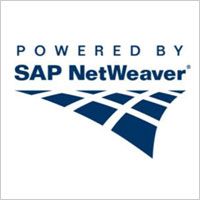 The question of how to perform change management for BPC NetWeaver comes up often from customers. With three ways to move items between landscapes this leaves customers with the question of what is the best method? We’ll go over the pros and cons of each method.
The question of how to perform change management for BPC NetWeaver comes up often from customers. With three ways to move items between landscapes this leaves customers with the question of what is the best method? We’ll go over the pros and cons of each method.
The first method limits what can and can’t be moved and uses transaction code UJFS. UJ has been reserved by SAP for BPC so if you see UJ it will most likely be for BPC and FS stands for file share. This t-code mimics the file share that is in the Microsoft version of BPC. Once in the transaction code, the appearance is close to the directory system seen in Microsoft operating systems.
You may use UJFS to:
- View files in the file system
- Export or Import files
- Create Folders
Files in BPC NetWeaver are stored in transparent tables in the NetWeaver ABAP server where the BPC components are installed. Tables UJF_DOC and UJF_DOCTREE are where the files are located. So this means that this file share is actually stored in the database and not on the server operating system.
Regarding the topic of change management, UJFS is limited to files that may be manually imported and exported. There is a program that we can run to move files stored in UJFS. Another downside with this method is that there is no record of what is being moved or a time stamp. In short, UJFS is limited to what can be moved and there is no traceability.
The second method is t-code UJBR. Again UJ standing for BPC and the BR is short for "backup restore." This option was introduced in BPC 7.5 and was a part of the SP3 version, but it was kept from the public until the SP4 release.
This option will backup and restore your entire environment in version 10 or also called application set in previous versions of BPC. For the BW folks reading this, this would be your info area. This normally is run immediately (on demand), but with some customization it may be scheduled to run through Data Manager.
Some downsides of this method are that there are no logs or records written when this is launched. This method fully backs up the environment and can include all data. It is a major concern to companies that have highly secured data and/or compartmentalized IT resources. The backup creates a zip file which cannot be encrypted. All of you that are in security and data management are probably shaking your heads right now.
The last method is utilizing SAP NetWeaver’s Transport Management system. This is highly secure and creates logs that give the following information:
- Object transported
- Time and date
- Success or failures
- Drill through into the errors for diagnosis
This method also records who created the transport, who also released it to be transported, and who transported the request. The items transported in this method are called requests.
All three methods are available and depending on the scenario each one has its own strengths. The only secure one is utilizing SAP NetWeaver’s Transport Management system. This again provides a clear tracking of who, what and when of the transports. This all should be taken into account when deciding on how change management should be completed. You will probably find that depending on the scenario, all three may be used at one time or another. For those companies that have highly sensitive data this will limit the choices.
Learn, grow and expand your BPC interests by registering for one of our upcoming webcasts!










